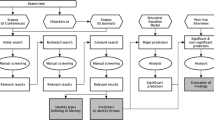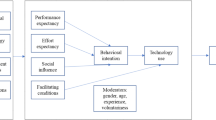Abstract
The study of the factors that influence the use of automated diagnosing system for Tuberculosis (TB) can help in developing a strategy to enhance health professional’s acceptance of a given new system. This paper aims to examine the factors influencing the adoption of Computer-assisted Medical Diagnosing system for TB by clinicians and lab technicians in the context of developing countries health care. For that, we conducted a qualitative study by collecting data through in-depth interviews of the clinicians and lab technicians. A total of 18 interviews were conducted and the collected data was analysed, using content analysis. The results show that human characteristics (age and computer knowledge), technological characteristics (performance expectancy and effort expectancy), organizational characteristics (training and support), and technological impact could influence the adoption of CMD system for TB. The findings of this study would help researchers and medical professionals in providing them more knowledge about technological adoption and also helps to determine the uptake of the recent technology by healthcare professionals.


Similar content being viewed by others
References
Ashly DB, Josip C, Claudia P, Chantelle A, Kathrin C, Tomislav B, Brian M, Rob P, Azeem M, Aziz S (2011) The impact of eHealth on the quality and safety of healthcare: a systemic overview. PLoS Med 8(1):e1000387. https://doi.org/10.1371/journal.pmed.1000387
Ayatollahi H, Bath PA, Goodacre S (2010) Factors influencing the use of IT in the emergency department: a qualitative study. Health Inform J 16(3):189–200
Blanco N, O’Hara LM, Robinson GL, Brown J, Heil E, Brown CH, Stump BD, Sigler BW, Belani A, Miller HL, Chiplinski AN, Perlmutter R, Wilson L, Morgan DJ, Leekha S (2018) Health care worker perceptions toward computerized clinical decision support tools for clostridium difficile infection reduction: a qualitative study at 2 hospitals. Am J Infect Control 46(10):1160–1166
Boonchai K, Supasit P, Stuart MS (2009) Factors influencing health information technology adoption in Thailand’s community health centers: applying the UTAUT model. Int J Med Inform 78(6):404–416. https://doi.org/10.1016/j.ijmedinf
Chaudhry B, Wang J, Wu S, Maglione M, Mojica W, Roth E, Morton SC, Shekelle PG (2006) Systematic review: impact of health information technology on quality, efficiency, and costs of medical care. Ann Internal Med 144(10):742–752
Chiu IC, Hwang H-G, Hung W-F, Li Y-C (2007) Physicians’ acceptance of pharmacokinetics-based clinical decision support systems. Expert Syst Appl 33(2):296–303
Christos DM, Leonidas AZ, Anastasia D, Vassilis M (2011) Modeling the acceptance of clinical information systems among hospital medical staff: an extended TAM model. J Biomed Inform 44(4):553–564. https://doi.org/10.1016/j.jbi.2011.01.009
Costa MG, CostaFilho CF, Kimura JA, Levy PC, Xavier CM, Fujimoto LB (2014) A sputum smear microscopy image database for automatic bacilli detection in conventional microscopy. In: Conference proceedings IEEE Engineering Medicine and Biology Society 2841–2844. https://doi.org/10.1109/embc.2014.6944215
David M, Belen F, Dann C, Sara F, Vicente M, Javier G, Zeev Z (2015) Novel image processing approach to detect malaria. Opt Commun 350:13–18
Davis FD (1989) Perceived usefulness, perceived ease of use, and user acceptance of information technology. MIS Q 13:319–339
de Camargo Jr KR, Guedes CR, Caetano R, Menezes A, Trajman A (2015) The adoption of a new diagnostic technology for tuberculosis in two Brazilian cities from the perspective of patients and healthcare workers: a qualitative study. BMC Health Serv Res 15:275
Despont-Gros C, Fabry P, Muller H, Geissbuhler A, Lovis C (2004) User acceptance of clinical information systems: a methodological approach to identify the key dimensions allowing a reliable evaluation framework. Medinfo 11(Pt 2):1038–1042
Despont-Gros C, Mueller H, Lovis C (2005) Evaluating user interactions with clinical information system: a model based on human–computer interaction models. J Biomed Inform 38(3):244–255
Feng-Cheng T, Su-Chao C, Chi-Min C (2008) An extension of trust and TAM model with IDT in the adoption of the electronic logistics information system in HIS in the medical industry. Int J Med Inform 77(5):324–335. https://doi.org/10.1016/j.ijmedinf.2007.06.006
Frean J (2007) Microscopic images transmitted by mobile camera phone. Trans R Soc Trop Med Hyg 101:1053
Global tuberculosis 2014 WHO report. Retrieved from: http://apps.who.int/iris/bitstream/10665/137094/1/9789241564809_eng.pdf. Last accessed 2015
Global tuberculosis 2016 WHO report. Retrieved from: http://apps.who.int/iris/bitstream/10665/250441/1/9789241565394-eng.pdf?ua=1. Last accessed 2017
Global tuberculosis report 2018. https://www.who.int/tb/publications/global_report/en/
Howard L, Yi-Ping PC (2015) Image based computer aided diagnosis system for cancer detection. Expert Syst Appl 42(12):5356–5365
https://www.youtube.com/watch?v=DH9fKEjYSkE. Signature mapping TBDx—a computer aided detection solution for TB. signaturemapping.com
Information about Tuberculosis (1985) Retrieved from:www.tbfacts.org. Last Accessed 2015
Louise KS, Graham PP (2007) ICT and OTs: a model of information and communication technology acceptance and utilisation by occupational therapists. Int J Med Inform 76(Suppl 1):S212–S221. https://doi.org/10.1016/j.ijmedinf.2006.05.028
Manuel FV, Filip S, Josue A, Norberto M, Gabriel C, Andrés S, Luis A, Manuel D, Leon C (2002) Segmentation, autofocusing and signature extraction of tuberculosis sputum images. In: SPIE proceedings of photonic devices and algorithms for computing IV 4788, pp 171–182
Manuel GF, Filip S, Gabriel C (2004) Identification of tuberculosis bacteria based on shape and color. Real-Time Imaging 10:252–262
Marie-Pierre G, Gaston G, Camille G, Jean-Paul F, Lise L, Daniel R, Alain C (2003) An adaptation of the theory of interpersonal behavior to the study of telemedicine adoption by physicians. Int J Med Inform 71:103–115
Marie-Pierre G, Marie D, Michel L, Josip C, Claudia P, Pierre P, Pierre F, Johanne G, Nadine T, France L (2012) Systematic review of factors influencing the adoption of information and communication technologies by healthcare professionals. J Med Syst 36:241–277
Marshall B, Cardon P, Poddar A, Fontenot R (2013) Does sample size matter in qualitative research?: A review of qualitative interviews in is research. J Comput Inf Syst 54(1):11–22. https://doi.org/10.1080/08874417.2013.11645667
McNerney R, Cunningham J (2015) New tuberculosis diagnostics and rollout. Int J Infect Dis 32:81–86
Mi JR, Hun SK, Kyungyong C, In YC (2015) Factors influencing the acceptance of telemedicine for diabetes management. Clust Comput 18(1):321–331
Mun YY, Joyce DJ, Jae SP, Janice CP (2006) Understanding information technology acceptance by individual professionals: toward an integrative view. Inf Manag 43:350–363
Murali S, Pouyan E, Naresh K, Hossein N (2012) Intention to adopt clinical decision support systems in a developing country: effect of Physician’s perceived professional autonomy, involvement and belief: a cross-sectional study. BMC Med Inform Decis Mak 12:142
National Health Profile (2015) Retrieved from: http://cbhidghs.nic.in/writereaddata/mainlinkFile/NHP-2015.pdf. Last accessed 2015
Nooshin N, Nigel J, Clinton W (2014) Histogram-based gravitational optimization algorithm on single MR modality for automatic brain lesion detection and segmentation. Expert Syst Appl 41:7820–7836
Osibote OA, Dendere R, Krishnan S, Douglas TS (2010) Automated focusing in bright-field microscopy for tuberculosis detection. J Microsc 240(2):155–163
Panicker RO, Soman B, Gangadharan KV, Sobhana NV (2016) An adoption model describing clinician’s acceptance of automated diagnostic system for tuberculosis. Health Technol 6(4):247–257. https://doi.org/10.1007/s12553-016-0136-4
Panicker RO, Soman B, Saini G, Rajan J (2016) A review of automatic methods based on image processing techniques for tuberculosis detection from microscopic sputum smear images. J Med Syst 40(1):17. https://doi.org/10.1007/s10916-015-0388-y
Pannebakker MM, Mills K, Johnson M, Emery JD, Walter FM (2019) Understanding implementation and usefulness of electronic clinical decision support (eCDS) for melanoma in English primary care: a qualitative investigation. BJGP Open. https://doi.org/10.3399/bjgpopen18x101635
Paul JH, Patrick YKC, Olivia RLS, Kar YT (1999) Examining the technology acceptance model using physician acceptance of telemedicine technology. J Manag Inf Syst 16(2):91–112
Rania S, Meredith L, Justin D (2013) Factors influencing decision support system acceptance. Decis Support Syst 54(2):953–961. https://doi.org/10.1016/j.dss.2012.09.018
Richard JH, Ben T (2010) The technology acceptance model: its past and its future in health care. J Biomed Inform 43(1):159–172. https://doi.org/10.1016/j.jbi.2009.07.002
RNTCP TB India 2011. Retrieved from: www.tbcindia.nic.in/pdfs/RNTCP TB India 2011.pdf. Accessed 2015
Robert E, Omar H, Gordon DS (2013) Use of health information technology to reduce diagnostic errors. BMJ Qual Saf. 22:ii40–ii51
Shibl R, Lawley M, Debuse J (2013) Factors influencing decision support system acceptance. Decis Support Syst 54:953–961
Shin-Yuan H, Yi-Cheng K, Jui-Chi C (2012) Understanding physicians’ acceptance of the medline system for practicing evidence-based medicine: a decomposed TPB model. Int J Med Inform 81(2):130–142. https://doi.org/10.1016/j.ijmedinf.2011.09.009
Shojania KG, Burton EC, McDonald KM, Goldman L (2003) Changes in rates of autopsy-detected diagnostic errors over time: a systematic review. JAMA 289(21):2849–2856
Tapley A, Switz N, Reber C, Davis JL, Miller C, Matovu JB, Worodria W, Huang L, Fletcher DA, Cattamanchi A (2013) Mobile digital fluorescence microscopy for diagnosis of tuberculosis. J Clin Microbiol 51(6):1774–1778
TB INDIA 2017 http://tbcindia.nic.in/WriteReadData/TB%20India%202017.pdf. Accessed 2017
Tomás E, Pedro M, Mercedes RM (2012) Acceptance of E-prescriptions and automated medication-management systems in hospitals: an extension of the technology acceptance model. J Inf Syst 26(1):77–96
Tuijn CJ, Hoefman BJ, van Beijma H, Oskam L, Chevrollier N (2011) Data and image transfer using mobile phones to strengthen microscopy-based diagnostic services in low and middle income country laboratories. PLoS ONE 6(12):e28348. https://doi.org/10.1371/journal.pone.0028348
Vassilios PA, Prodromos DC (2009) Using a modified technology acceptance model in hospitals. Int J Med Inform 78(2):115–126. https://doi.org/10.1016/j.ijmedinf.2008.06.006
Venkatesh V, Morris MG, Davis GB, Davis FD (2003) User acceptance of information technology: toward a unified view. MIS Q 27(3):425–478
Veropoulos K, Campbell C, Learmonth G, Knight B, Simpson J (1998) The automated identification of tubercle bacilli using image processing and neural computing techniques. In: Proceedings of the 8th international conference on artificial neural networks, Sweden, 2, pp 797–802
Vijay N (2012) Tuberculosis diagnostics: challenges and opportunities. Lung India 29(3):259–266
Welikala RA, Fraz MM, Dehmeshki J, Hoppe A, Tah V, Mann S, Williamson TH, Barman SA (2015) Genetic algorithm based feature selection combined with dual classification for the automated detection of proliferative diabetic retinopathy. Comput Med Imaging Graph 43:64–77. https://doi.org/10.1016/j.compmedimag.2015.03.003
Yongping Z, Yunhui L, Dongxiang Z, Shun L (2010) Automatic identification of mycobacterium tuberculosis from ZN-stained sputum smear: algorithm and system design. In: IEEE international conference on robotics and biomimetics, China, pp 41–46
Author information
Authors and Affiliations
Corresponding author
Rights and permissions
About this article
Cite this article
Panicker, R.O., Sabu, M.K. Factors influencing the adoption of computerized medical diagnosing system for tuberculosis. Int. j. inf. tecnol. 12, 503–512 (2020). https://doi.org/10.1007/s41870-019-00396-6
Received:
Accepted:
Published:
Issue Date:
DOI: https://doi.org/10.1007/s41870-019-00396-6




